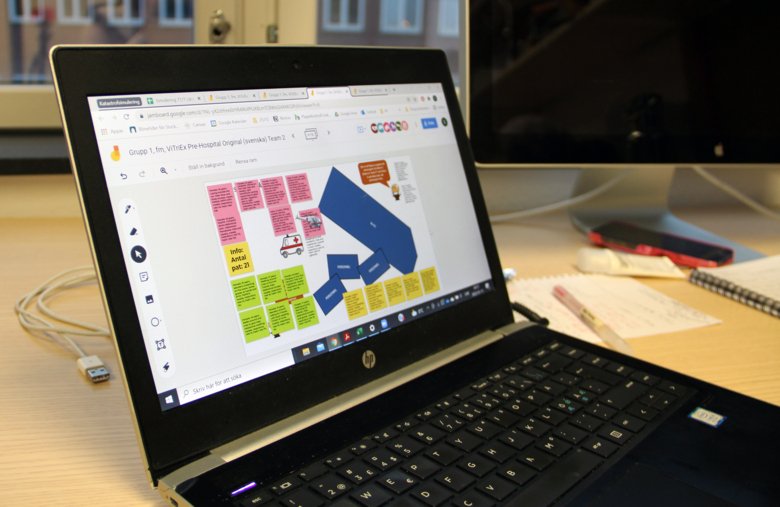Virtual triage exercise prepares students to handle real disasters

There has been a road traffic accident. Several cars, a lorry and a bus are involved. Almost a hundred people are injured, resources are limited, and the nearest hospital is a long way away. It might not look like that when a group of around ten teachers sit behind their computers at the Centre for Research in Health Care in Disasters at the Department of Global Public Health, but that is what has happened. Although, it has happened virtually, inside the computer.
Around a hundred students from the courses in disaster medicine, emergency medicine and children’s medicine at KI gathered on Tuesday to take part in a virtual triage exercise. It is an exercise known as trauma simulation, a kind of role-playing that is based on real conditions and that assigns students specific roles in order for them to handle a fictional situation. The aim of trauma simulation is to give students an opportunity to practice making quick, often life defining, decisions. The simulation teaches students triage, organisation, leadership, role assignment, prioritising and much more, in a stressful environment where access to resources and information is in short supply.
The fact that the trauma simulation was done virtually this time is somewhat new. The need to do these exercises digitally, in order to avoid gathering many people in one place, is something that has become necessary due to the covid-19 pandemic. As a result, staff and associates at the Centre for Research on Health Care in Disasters developed ViTriEX – Virtual Triage Exercise – and thus moved the accident into the computer.
Consequently, students could work from home during the triage exercise on Tuesday and handle the emergency together as it unfolded in real-time on their computers. The teachers, in turn, were at KI, where they controlled the exercise, made sudden changes to the condition of the patients, and guided the students. Students and teachers communicated digitally via Zoom, but had also exchanged phone numbers, which meant that the teachers could act as the emergency dispatch service, but also suddenly call playing the part of a concerned loved one or a newsgathering journalist.
Andreas Älgå, specialist surgeon and one of the teachers that managed the trauma simulation, thinks ViTriEx works well, even though the injured in it only exist on a screen. ”You can practice several things by using this tool. Organisation, collaboration, leadership, prioritising, division of resources and the need to maintain an overview of the situation and not get bogged down too much in individual cases, those are all things that you can also practice in a virtual simulation”.
The students also thought the simulation increased their understanding of several elements. ”I thought it was worthwhile”, says Pontus Lenander who is currently studying semester 10 at KI’s medical doctor programme and doing the advanced course in emergency medicine, ”your attention is called to aspects of an emergency situation that you might not think about otherwise.”
There is a lot to learn from virtual simulation tools, during the current pandemic as well as after. ViTriEx is not just efficient in terms of resources, but also very interactive and can be adapted as needed. The Centre for Research on Health Care in Disasters intends to continue to use and develop ViTriEx as one of many tools they use in their teaching.
- ViTriEx (Virtual Triage Exercise) is a digital simulation tool developed by the Centre for Research on Health Care in Disasters at Karolinska Institutet in order to practice prioritising in mass casualty situations.
- ViTriEx uses open access software (Zoom och Google Jamboard) and creates a scenario where many people have been injured.
- In the simulation participants are taken to a casualty scene, as well as to the emergency room of a smaller hospital, where they are given different roles and get to practice prioritising among the injured, communication and making rapid decisions in a chaotic environment where resources are scarce.
- The exercise is led by experienced doctors and others with competency in disaster medicine. The simulation offers the opportunity for direct feedback on the decisions taken by the participants.
- The project ViTriEx has been given research funding and is continuously developed and improved.
